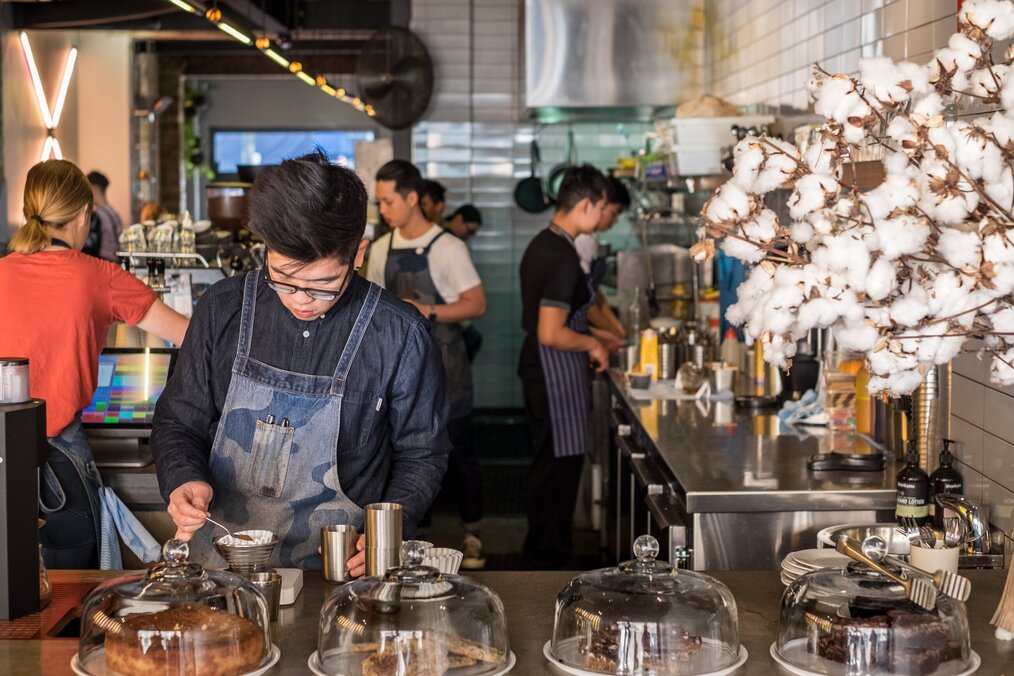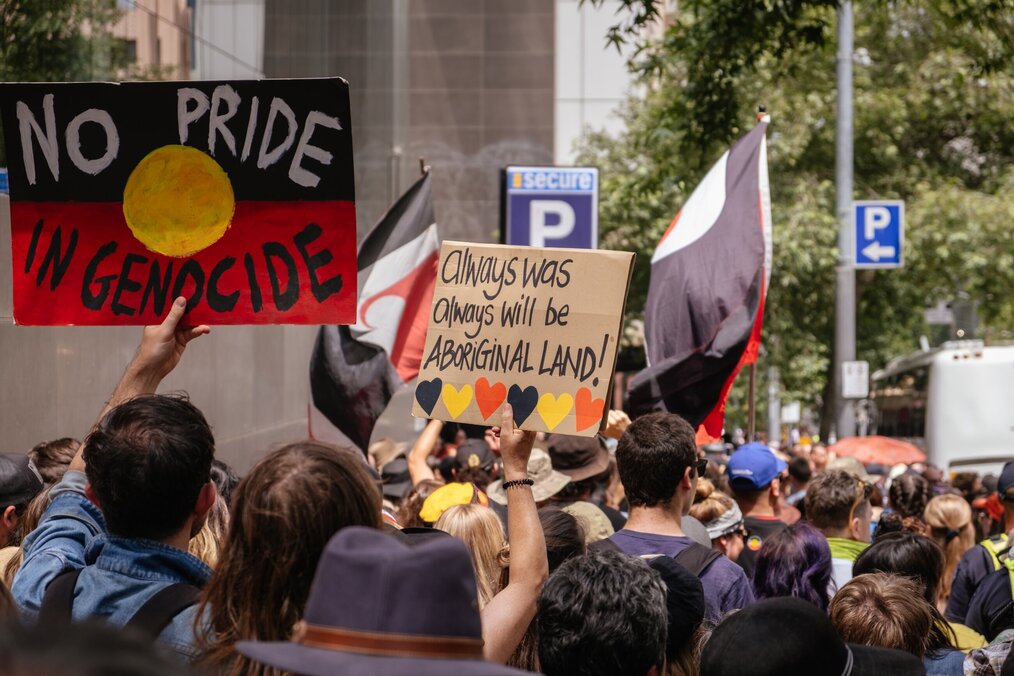13 Things to Know Before Studying in Australia
Get the inside info on everything you need to know before studying abroad in Australia from differences in the university grading system to popular slang.

When we think of Australia, coral reefs, beautiful sandy beaches, and intense wildlife come to mind. But there's a lot to know about this island nation. If you're considering studying abroad in Australia, it's important to do some research about the culture, food, history, and social norms. Otherwise, you may find yourself in a bind or facing some difficult surprises once you’re abroad.
Whether you choose to study in Australia through a third-party program provider, your home university’s program, or directly enroll in a university in Australia there are a few things your advisor may have skipped over in your pre-departure orientation package. Let us help you out with some need-to-know information before you jet off to The Land Down Under.
1. Student visas are necessary for long-term study
To study in Australia for more than three months, you will need a student visa. The process for applying is fairly easy. It’s all done online and it is virtually linked to your passport -- no embassy visits or waiting for it to arrive in the mail. The cost of applying for this visa starts at $650 AUD ($450 USD).
If you study for less than three months, you should be able to go on a regular visitor visa and save yourself time and cash.
2. You may need to get health insurance
If you are going on a study abroad program, health insurance may be included, but if you are studying directly with a university, chances are you’ll be required to buy it in Australia.
Specifically, the Australian government requires that all international students obtain Overseas Student Health Cover (OSHC). Insurers can provide a range of different OSHC products, so you'll want to make sure you sign up for a plan that fits your desired coverage. And remember, check in with your study abroad program to make sure you have the full scoop about what is and is not covered.
Read more: Study Abroad Insurance: All You Need to Know Before You Go
3. Australia is expensive
Sydney and Melbourne regularly make the top ten lists of the world’s most expensive cities. From housing to groceries, prepare to experience some sticker shock and make sure to have a good chunk of change saved. According to Numbeo, a one-bedroom apartment in the center of Melbourne will cost $1,400 USD while the same in Sydney will cost just under $2,000 USD.
Be sure to create a budget and do your best to stick to it. We recommend budgeting an additional $6,000-$7,000 for living expenses, not including tuition, room, and board. If that number gives you sticker shock, be sure to read up on how to study abroad in Australia on a budget.
Read more: How Much Does it Cost to Study Abroad in Australia?
4. You’ll be able to work while you’re in Australia

Remember that expensive student visa you had to pay for? Well, you can earn that money back! The typical study visa in Oz will allow you to work 20 hours a week.
Considering the high minimum wage in Australia ($21.38 AUD an hour/$14.89 USD), it’s worth it if you can balance work and studies! It’s a great way to meet people in your new city and will also look good on your resume.
Read more: What You Need to Know About the Australia Working Holiday Visa
5. The seasons are flipped
If you are going to Australia in the northern hemisphere's summer, for example, you'll be flying straight into winter. And despite the images of sunshine and beaches that may be swimming in your head, if you are studying in one of the big cities in the south (like Sydney or Melbourne) it WILL get cold. The coldest month for Sydney is July which sees an average daily high of 62F (17C) and low of 47F (8C). Melbourne is also coldest in July with highs around 55F (13C) and lows around 44F (7C). Make sure you pack accordingly!
6. Know the official (and unofficial) rules of the road
There’s a pretty good chance you might end up renting a car at some point while you’re abroad. Before you get behind the wheel, it’s important to know that like other Commonwealth countries, Aussies drive on the left side of the road. Watch out for traffic cameras everywhere. And, oddly, don’t drive at dawn or dusk!
Yes, this may sound totally random, but during the early morning, late evening, and even nighttime kangaroos are everywhere and much harder to see coming. And they will not only cause damage to your car but probably to your emotions as well -- how much would it suck to accidentally injure something so awesome?
7. Forget the stereotypes
Despite what TV has taught us, it's not a good idea to call girls "sheilas" and don’t expect to see everyone dressed in safari gear, wrangling crocs. People do say “G’day,” but that’s about where the similarities stop.
Speaking of stereotyping, make sure you read up about Australia before you set out to study abroad there. For example, what is the capital of Australia? Canberra! Impress your host country citizens by knowing a bit more than the average Joe, and do your due diligence to be a respectful and well-informed visitor.
Regardless of which study abroad program you select, you will most certainly get a feel for Australia's infamous laidback attitude, appreciation for nature, and overall contagious good vibes.
8. Understand the history of indigenous Australians

Like the US, Australia struggles with reconciling a dark past concerning the treatment of indigenous Australians. Australia’s First Nations peoples include Aboriginal and Torres Strait Islander peoples who were the original inhabitants of Australia before European colonization began in 1788.
Indigenous Australians have been subjected to numerous indignities and atrocities since the beginning of colonization. Most notably, between 1910 through the 1970s a period known as The Stolen Generations saw thousands of Indigenous Australian children forcibly removed from their homes and given to white families to be raised.
Being aware of the social history of Australia as well as its present-day challenges will help you to be a more respectful and informed visitor to the country. For example, using the term Aborigine is now considered an insensitive term because it combines people from different indigenous backgrounds into one group. While such mistakes may be overlooked when coming from an outsider, it’s better to avoid using language that could be offensive or hurtful to others.
9. Australian slang is extensive
.png?itok=EBE1V6XM)
Australian English doesn’t just come with a different accent. Australians have an extensive catalog of slang words that are used in everyday conversation and can be confusing to people who are native speakers or learned English from another English-speaking country. Although Australian English shares some words with British English (using lift in addition to elevator, and chips for fries) they have a linguistic style all their own that reflects the laid-back and playful Australian culture.
10. Aussies are really outdoorsy
The beautiful weather in Australia is conducive to outdoor activity and Australians certainly take full advantage. Aussies love being outside, whether to lounge on the beach, play sports, or go camping and barbecue. If you’re not exactly the outdoorsy type, be aware that a lot of plans revolve around getting out and enjoying the sun. For those who love indulging in hiking, surfing, and four-wheeling there’s no shortage of awesome day trips you can enjoy in Australia.
11. It’s a huge country

The “Australian dream” for many includes the Great Barrier Reef, Uluru and the Outback, the Sydney Opera House, and so much more. But to come to Australia expecting to see all this and more is likely a fantasy unless you have a lot of time and money to burn. To put it into context, driving from Perth on the western coast to Brisbane on the eastern coast takes around 46 hours. Driving from Los Angeles to DC actually takes less time!
Wherever you are studying, there are surely plenty of amazing things nearby, and you can probably swing one big trip, but manage your expectations about seeing the whole country.
12. The grading system is different
If you’re going to be receiving Australian grades, it’s worth looking into what they mean. Here are Australian university grades and their US equivalent.
| Australia | US |
|---|---|
|
High distinction (100-80%) |
A+ |
|
Distinction (79-70%) |
A |
|
Credit (69-60%) |
B |
|
Pass (59-50%) |
C |
|
Conceded Pass |
D |
|
Fail (below 50%) |
F |
Source: GPA Calculator
So on your first assignment, if you get a 70%, rather than despairing over a C, celebrate your first A!
13. The time difference can be tricky
The time difference between Australia and the Americas is intense. If you arrive in the morning, force yourself to stay up (and ideally stay active!) all day. If you arrive at night, go to bed. The sooner you dive into your new time zone, the better.
After that initial jet lag is over though, you'll then be faced with the complicated issue of finding a good time to talk to your friends and family back home! There are 3 time zones across Australia (5 during daylight savings time) and when compared with the US, there are big differences:
- Los Angeles vs. Sydney = 19 hour difference
- Washington, DC vs. Sydney = 16 hours
When you suggest a time for a FaceTime date, be sure to consider your and your partner’s time zones to avoid confusion!
Read more: Top Apps to Stay in Touch With Loved Ones While Overseas
Say g’day to Australia
Being aware of these 13 simple facts will make your study abroad stay in Australia heaps (get used to using that word!) better. With a little preparation, I reckon you’ll have a wicked time -- kicking arse in class in the arvo and enjoying snags and stubbies on the beach on the weekend. Just don’t forget your sunnies!
Learn more about studying in Australia:
